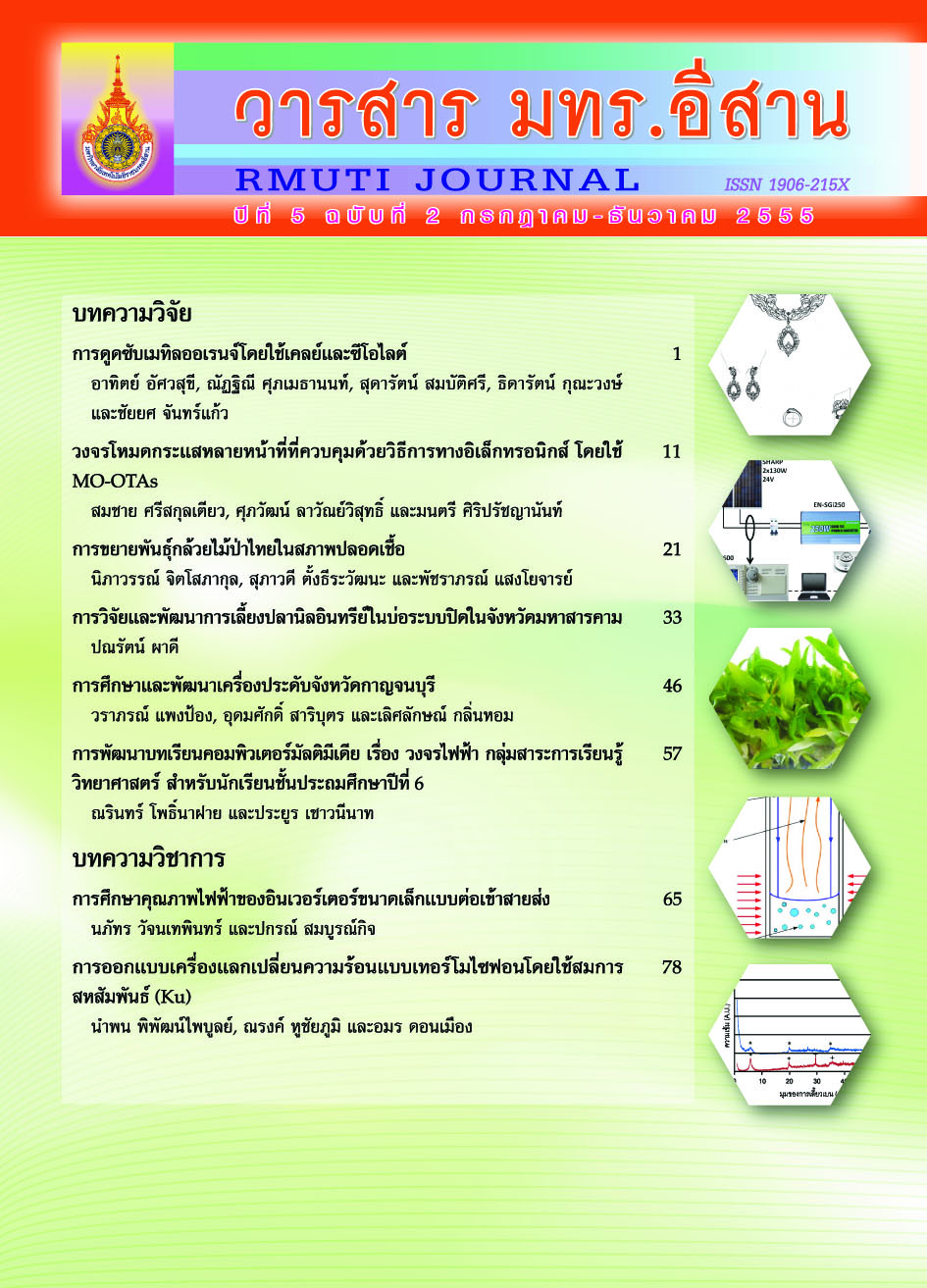การวิจัยและพัฒนาการเลี้ยงปลานิลอินทรีย์ในบ่อระบบปิดในจังหวัดมหาสารคาม
Main Article Content
Abstract
บทคัดย่อ
การวิจัยและพัฒนาการเลี้ยงปลานิลอินทรีย์ในจังหวัดมหาสารคาม มีวัตฤประสงค์เพื่อพัฒนาการเลี้ยง ปลานิลอินทรีย์ด้วยการทำวิจัยในพื้นที่เกษตรทฤษฎีใหม่ของเกษตรกรผู้ร่วมโครงการ 4 ครอบครัว โดยศึกษาข้อมูลเบื้องต้นเกี่ยวกับการเลี้ยงปลา การพัฒนาสูตรอาหารอินทรีย์ที่เหมาะสมต่อการเลี้ยงปลานิล ในบ่อปิด ตลอดจนการศึกษาคุณสมบัตินี้าและดินในบ่อเลี้ยง จากการศึกษาพบว่า เกษตรกรมีบ่อนี้า ในพื้นที่แต่ก็ไม่ได้เลี้ยงปลาเป็นกิจลักษณะ คุณสมบัติของดิน ขาดความอุดมสมบูรณ์ และมีความเค็ม ค่อนข้างสูง ส่วนคุณภาพนํ้ามีสภาพปานกลาง การศึกษาอาหารอาหารสำเร็จรูปในการเลี้ยงปลานิลในกระชัง พบว่า การเลี้ยงด้วยอาหารปลานิลให้อัตราการเจริญเติบโตและการเปลี่ยนอาหารเป็นเนื้อดิที่สุด แต่เมื่อ เปรียบเทียบด้นทุนการผลิตแล้วอาหารเม็ดปลาดุกให้ผลคุ้มค่าเช่นกัน ส่วนผลการเลี้ยงปลานิลด้วยสูตร อาหารอินทรีย์พบว่า อาหารสูตรที่ 1 และ 4 ให้อัตราการเจริญเติบโตและอัตราการแลกเนื้อดิทีสุด แต่เปรียบเทียบกับการเลี้ยงด้วยอาหารสำเร็จรูปพบว่ามีด้นทุนการผลิตสูงกว่า นอกจากนี้ ยังพบว่า ผลการทดลองมีความแตกต่างกันในแต่ละพื้นที่ ทั้งนี้ขึ้นกับสภาพของพื้นที่ ความอุดมสมบูรณ์ของพื้นที่ ความเอาใจใส่ และความรู้ทางวิชาการที่เกษตรกรสามารถพัฒนาได้ จากผลการศึกษาชี้ให้เห็นว่าเกษตรกร ส่วนใหญ่ขาดความรู้ในเรื่องโภชนศาสตร์สัตว์นํ้า การให้อาหาร ตลอดจนการจัดการด้านอื่นๆ ในการเลี้ยงปลา ซึ่งควรจะได้รับการพัฒนาทักษะด้านต่างๆ จากรัฐ
คำสำคัญ : ปลานิลอินทรีย์, การเจริญเติบโต, บ่อระบบปิด
Abstract
The research and development of organic Nile tilapia (Oreochromis niloticus) culture in close system pond in Maha Sarakham Province aimed to develop organic Nile tilapia culture via research in new Royal theory agriculture farming of 4 coresearcher farmers. This study investigated basic knowledge of fish raising, appropriate organic feed formula development for Nile tilapia culture in close system ponds, and water and soil properties of culture ponds in Maha Sarakham. The results revealed that most of fish culture in Royal theory farming was extensive. Soil property was poor of soil fertility and high salinity. Water quality was moderate for aquaculture. Effect of commercial fish feed on the SGR, FCR, SR and cost production of Nile tilapia found commercial Tilapia feed showed highest efficiency on growth performance but when compared based on cost production, commercial Catfish feed was the most effective. From Nile tilapia culture using organic feed formula developed in this study it was found that the formula I and IV showed highest SGR and FCR. However, cost production was high when compared to the commercial feed. In addition, it was found that all data were varied in different areas in which dependence on diets quality, soil and water fertility, knowledge skills and farmer intention. It indicates that the farmers were poorly educated in fish nutrition and farm management, so they that should improve their professional skills provided by the government.
Keyword : Organic Nile tilapia, Growth performance, Close system pond


